
Don’t Make These Mistakes
Picture this: a warm summer evening, a gentle breeze rustling through the trees, and the soft glow of twinkling lights illuminating your beautifully designed patio space.
Creating a perfect outdoor oasis takes more than just placing a few chairs and a table; it requires thoughtful planning and careful consideration of various elements. To help you achieve the patio of your dreams, we’ve enlisted the expertise of seasoned designers who have seen it all.
Here are 12 mistakes to avoid when designing your patio, along with insights from these professionals to guide you on your journey.
This post may contain affiliate links. As an Amazon affiliate, we earn from qualifying purchases. But we only recommend products we would use ourselves. View our Disclosure Policy here.
1. Neglecting Functionality
Every great patio design starts with functionality. It’s essential to consider how you intend to use the space. Sarah, a seasoned landscape architect, emphasizes, “One common mistake is designing a patio without considering its purpose.
Are you looking for a cozy bistro set for morning coffee or an entertainment hub large sectional sofa for hosting parties? Understanding the functionality will guide your design decisions.”
Expanding on the significance of functionality, it’s crucial to delve deeper into the specific needs and preferences of those who will be using the patio. For instance, if you’re a frequent entertainer, you might prioritize ample seating areas and space for a stunning barbecue grill.
Conversely, if your patio is primarily for relaxation, you might opt for a cozy lounge area with comfortable seating and a wood burning fire pit for cozy evenings. By aligning the design with the intended functionality, you can create a patio that not only looks beautiful but also enhances your lifestyle and fulfills your practical needs.
2. Ignoring the Surroundings
Your patio shouldn’t feel like an isolated island but rather seamlessly blend with its surroundings. “Ignoring the context of your outdoor space is a major faux pas,” says James, an experienced outdoor living designer. “Take cues from the architecture of your home, existing landscaping, and natural elements like trees and terrain.
Your patio should complement and enhance its surroundings, not clash with them.”
In addition to considering the physical aspects of your surroundings, such as the architecture and landscaping, it’s also essential to consider the climate and microclimate of your location.
Understanding how sunlight, wind patterns, and seasonal changes impact on your outdoor space can inform design decisions regarding shade structures, plant selection, and outdoor amenities. By harmonizing your patio design with its natural environment, you can create a cohesive and inviting outdoor retreat that feels like an extension of your home.
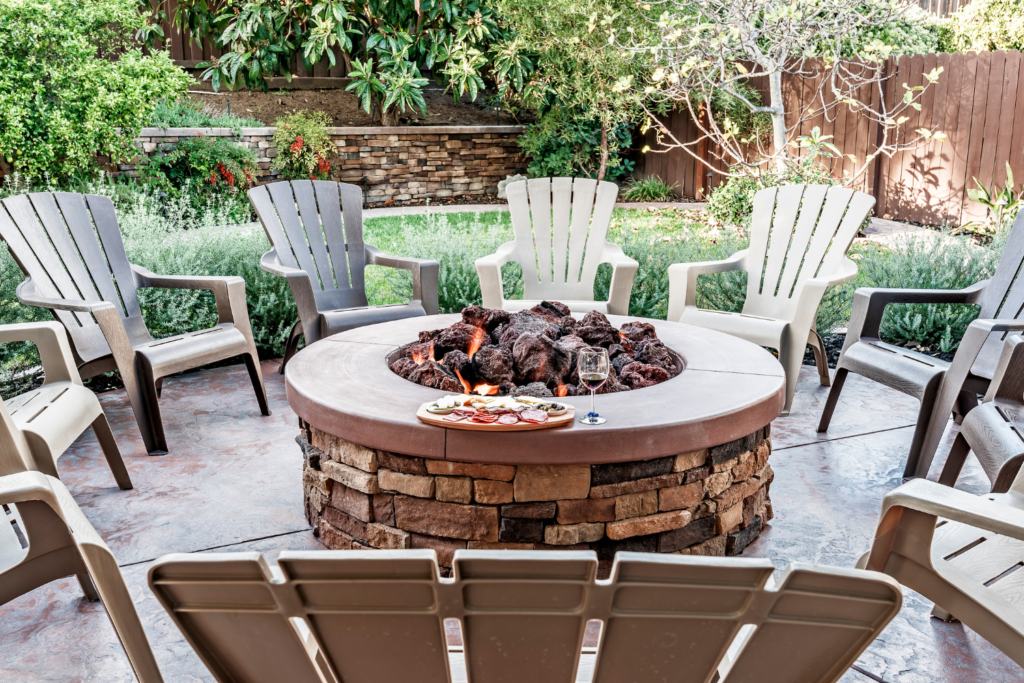
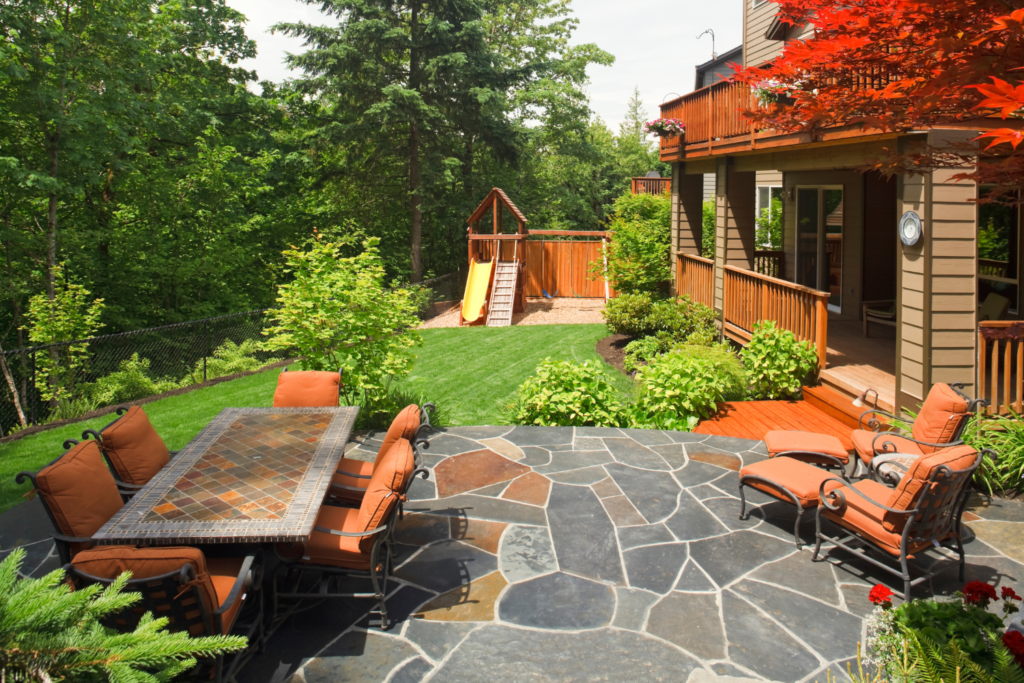
3. Overlooking Privacy
Privacy is often overlooked but crucial for creating a comfortable outdoor retreat. “Many homeowners forget to consider sightlines and privacy when designing their patio,” remarks Emily, an interior designer specializing in outdoor spaces. “Strategic placement of trellis walls, hedges, or hard top gazebos can provide privacy without sacrificing aesthetics. Don’t forget to factor this into your design.”
When contemplating privacy solutions, it’s essential to strike a balance between seclusion and openness. While tall fences or walls can provide maximum privacy, they may also create a sense of confinement or block desirable views.
Incorporating elements like latticework, trellis planter walls, or strategically placed vegetation can offer privacy while still allowing airflow and maintaining a sense of connection with the surrounding landscape.
By carefully considering your privacy needs and exploring creative design solutions, you can cultivate a tranquil outdoor sanctuary where you can relax and unwind in peace.
4. Underestimating Comfort
Your patio should be an extension of your indoor living space, offering both style and comfort and conversational furniture pieces.
“One common mistake is prioritizing aesthetics over comfort,” explains David, a seasoned patio furniture designer. “Invest in quality, comfortable seating and add elements like outdoor rugs, cushions, and throw pillows to create a cozy atmosphere. Remember, comfort is key for enjoying your outdoor space.”
When selecting outdoor furniture, it’s crucial to consider not only comfort but also durability and weather resistance. Opt for materials such as premium teak, cast aluminum, or weatherproof wicker that can withstand the elements and require minimal maintenance.
Additionally, choosing furniture with removable cushions and covers allows for easy cleaning and storage during inclement weather.
By investing in high-quality, weather-resistant furnishings, you can ensure that your patio remains inviting and comfortable for years to come, providing a welcoming retreat for both you and your guests.
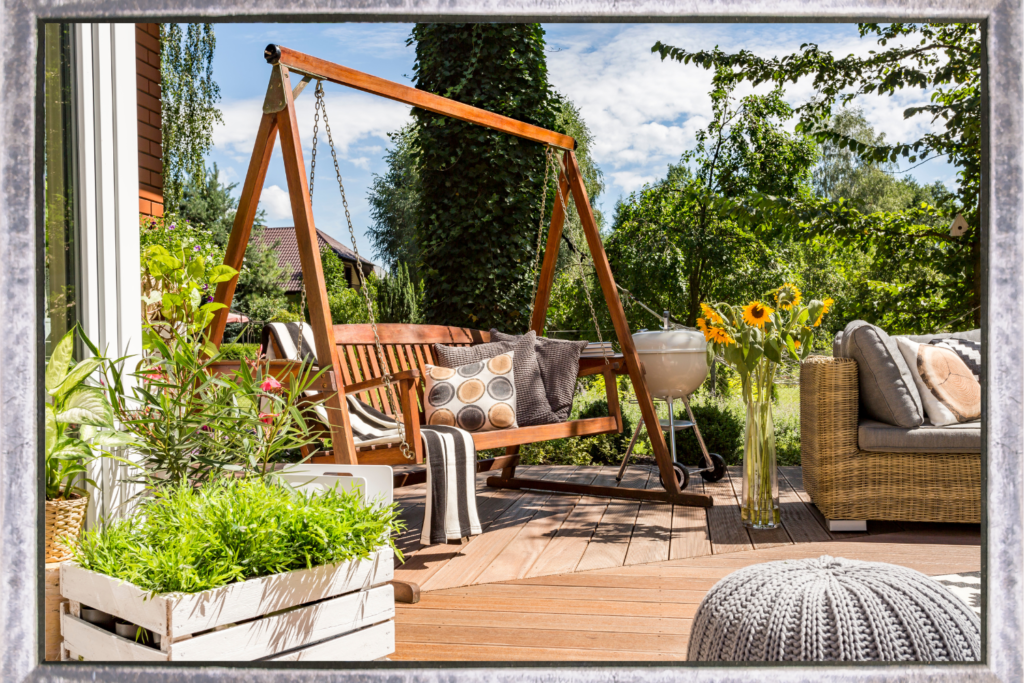
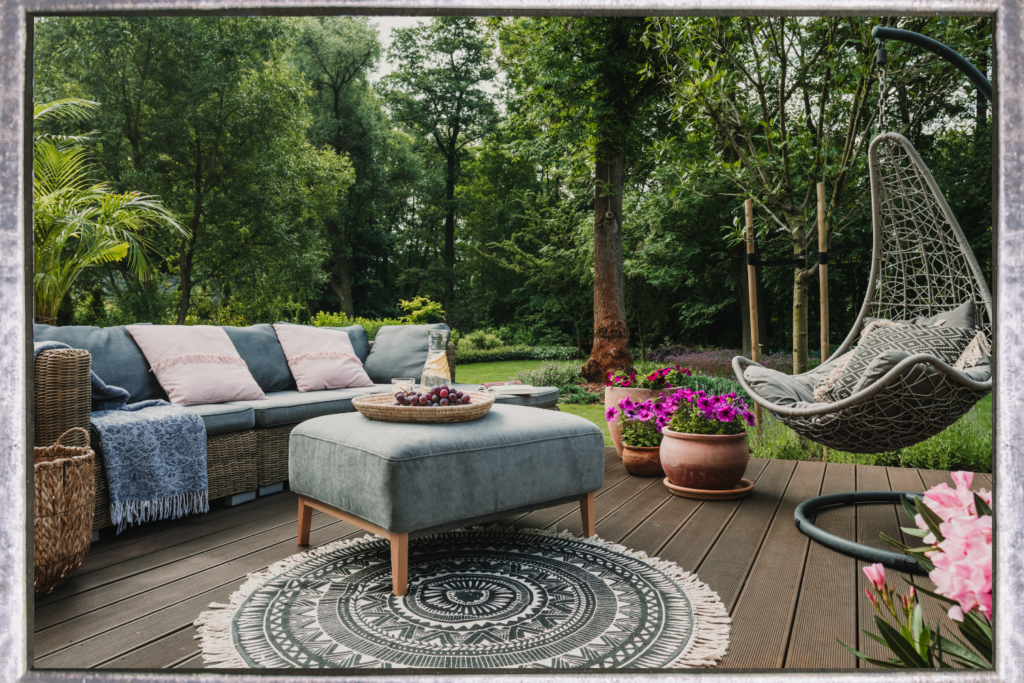
5. Disregarding Lighting
Lighting sets the mood and enhances the functionality of your patio, yet it’s often an afterthought in design plans.
“Neglecting lighting can leave your patio feeling dull and uninviting,” warns Rachel, an outdoor lighting specialist. “Incorporate a mix of ambient, task, and accent lighting to create depth and ambiance.
Consider options like LED WiFi string lights, lanterns, and solar pathway lighting to illuminate your outdoor space effectively.”
Likewise, beyond simply providing illumination, lighting can also be used to highlight key features of your patio design, such as architectural elements, landscaping, or focal points.
By strategically placing lights along pathways, under pergolas, or around seating areas, you can create visual interest and draw attention to the unique aspects of your outdoor space.
Additionally, incorporating dimmers or smart lighting controls allows you to adjust the intensity and ambiance according to different occasions and preferences, providing versatility and flexibility in your patio’s lighting design.
6. Forgetting About Shade
Shielding yourself from the sun’s harsh rays is essential for enjoying your patio throughout the day.
“Forgetting about shade is a common mistake that can make your patio unbearable in the heat,” cautions Michael, a landscape designer.
“Incorporate shade solutions like umbrellas, awnings, pergolas, or shade sails into your design to provide relief from the sun. Your guests will thank you for it.”
Additionally, when integrating shade structures into your patio design, consider the orientation of your space and the path of the sun throughout the day.
Positioning shade elements strategically can optimize their effectiveness in blocking sunlight during peak hours while still allowing for ample natural light and ventilation.
Incorporating adjustable or retractable shade options gives you the flexibility to adapt to changing weather conditions and preferences, ensuring that your patio remains comfortable and enjoyable in any season.
7. Neglecting Maintenance
A beautifully designed patio can quickly lose its charm if not properly maintained.
“Many homeowners overlook the maintenance aspect of their outdoor space,” notes Laura, a landscape architect. “Choose low-maintenance materials and plants and establish a regular cleaning and upkeep routine. Investing time in maintenance will ensure your patio looks its best year-round.”
Incorporating features that facilitate easy maintenance can help streamline upkeep tasks and prolong the lifespan of your patio. Invest in weather resistant patio furniture covers to ensure long lasting life to your patio furniture.
For instance, opting for stain-resistant outdoor fabrics, non-porous paving materials, and durable finishes minimizes the need for frequent cleaning and repairs.
Additionally, installing irrigation systems or drought-tolerant landscaping reduces water consumption and maintenance requirements, freeing up time and resources for you to enjoy your patio rather than constantly tending to it.
By prioritizing low-maintenance design elements and adopting proactive maintenance practices, you can preserve the beauty and functionality of your outdoor oasis with minimal effort.
8. Overcrowding the Space
Less is often more when it comes to patio design. “Overcrowding the space with too much furniture or decor is a common mistake,” advises Alex, an interior designer specializing in outdoor spaces. “Leave room to move around comfortably, and ensure there’s ample space for guests to mingle.
Opt for multi-functional furniture pieces or compact patio sofas to maximize space without sacrificing comfort.”
Also, creating a sense of openness and flow within your patio enhances both visual appeal and functionality. Avoid cluttering the space with unnecessary items, and instead focus on selecting a few statement pieces that serve multiple purposes.
For example, a foldable bistro dining table and chairs that can be easily set out of the way or furniture sets with ottomans that double as extra seating and storage can help maximize space without compromising style or comfort.
Additionally, incorporating vertical elements such as flower and garden raised beds with a trellis, wall hanging planters or hanging baskets frees up floor space while adding greenery and visual interest to your patio.
By embracing a less-is-more approach and prioritizing versatile furnishings, you can create a welcoming and harmonious outdoor environment that encourages relaxation and socializing.
9. Failing to Create Zones
A well-designed patio should have defined zones for different activities, from dining to lounging. “Failing to create zones can result in a disjointed and cluttered space,” explains Jessica, an outdoor living expert. “Divide your patio into areas for dining, lounging, cooking, and gardening, if space allows. This will create a cohesive layout that maximizes functionality and flow.”
Delineating distinct zones not only improves organization but also enhances usability and enjoyment of your outdoor space. Each zone can be tailored to specific activities and preferences, fostering a sense of purpose and harmony within your patio.
Consider incorporating elements such as outdoor rugs, planters, or a decorative trellis to visually separate different areas while maintaining a cohesive design aesthetic.
Additionally, integrating transitional spaces such as pathways or patio bench seating nooks between zones encourages exploration and interaction, creating an engaging and dynamic outdoor experience for you and your guests.
By thoughtfully dividing your patio into functional zones, you can optimize its layout and create a versatile outdoor haven that caters to your lifestyle and needs.
10. Ignoring Drainage Issues
Proper drainage is essential for preserving the integrity of your patio and preventing water damage. “Ignoring drainage issues can lead to costly repairs down the line,” warns Brian, a landscape contractor. “Ensure your patio is properly sloped to allow water to drain away from your home’s foundation.
Consider installing permeable pavers or a French drain system to manage excess water effectively.”
In addition to addressing surface drainage, it’s crucial to consider sub-surface drainage to prevent water from pooling or seeping into the foundation of your home. Installing a gravel or crushed stone base beneath your patio surface promotes proper drainage and prevents water from accumulating.
Furthermore, incorporating landscape features such as swales or rain gardens helps redirect runoff away from your patio and into designated drainage areas, reducing the risk of erosion and water damage.
By proactively addressing drainage issues during the design phase, you can ensure the long-term stability and durability of your patio, protecting your investment and preserving the beauty of your outdoor space for years to come.
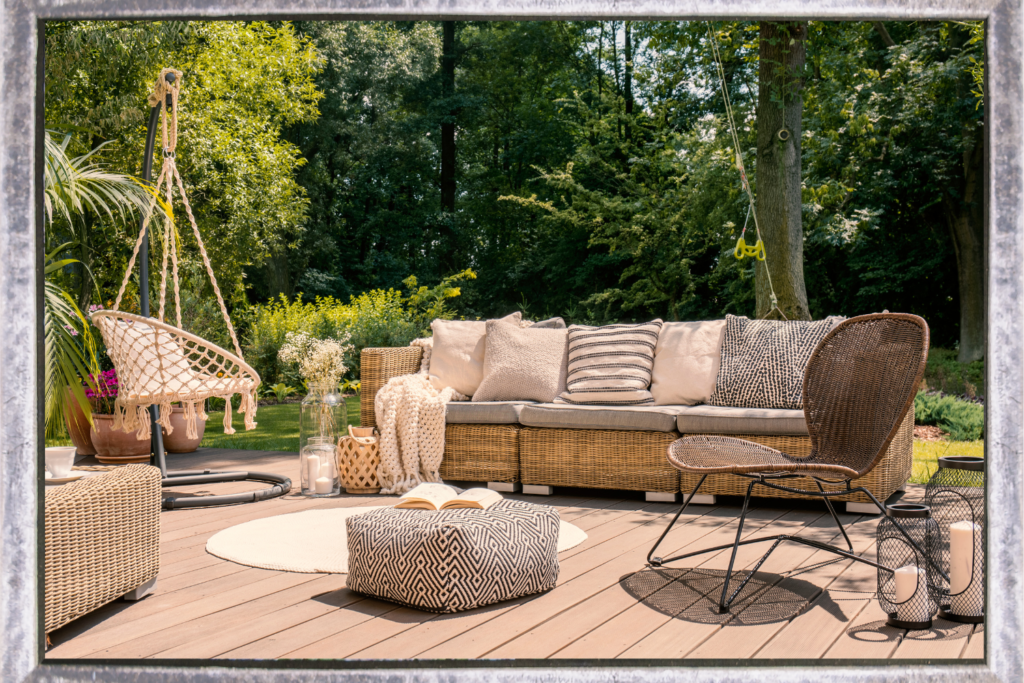
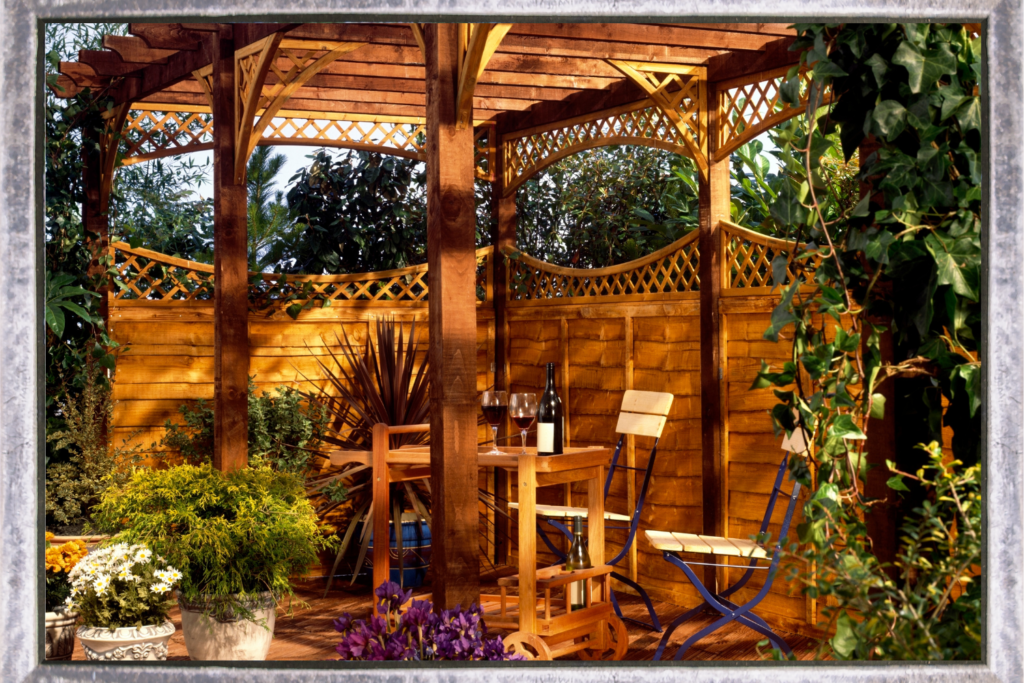
11. Disregarding Climate Considerations
Your patio design should consider the climate of your region, including factors like temperature, humidity, and precipitation. “Disregarding climate considerations can result in materials deteriorating prematurely,” advises Maria, an outdoor design consultant. “Choose materials that can withstand your local climate and weather conditions. Consider options like weather-resistant furniture, durable flooring materials, and native plants that thrive in your area.”
Incorporating energy-efficient design strategies can help mitigate the impact of extreme weather conditions and reduce your environmental footprint.
For example, integrating passive solar principles such as strategic placement of shade structures such as pergolas with retractable covers and hard topped gazebos and orientation of outdoor living areas can help regulate temperatures and minimize the need for artificial heating or cooling.
Additionally, selecting materials with high thermal mass, such as stone or concrete, can absorb and release heat slowly, contributing to a more comfortable outdoor environment year-round. By considering climate considerations holistically and embracing sustainable design practices, you can create a resilient and eco-friendly patio that harmonizes with its natural surroundings and enhances your outdoor living experience.
12. Rushing the Design Process
Designing the perfect patio takes time and careful consideration, so don’t rush the process. “One of the biggest mistakes homeowners make is rushing the design process,” says Peter, an award-winning landscape designer. “Take the time to plan and research different ideas, materials, and layouts. Consider hiring a professional designer to help bring your vision to life. Remember, a well-designed patio is worth the investment.”
Engaging in the design process thoughtfully allows for exploration of creative ideas and innovative solutions tailored to your unique needs and preferences.
Consider creating mood boards or sketching out potential layouts to visualize different design possibilities and identify elements that resonate with you.
Additionally, seeking input from family members or friends who will use the patio can provide valuable insights and ensure that the final design reflects everyone’s input and desires.
By approaching the design process with patience and open-mindedness, you can collaborate with design professionals and stakeholders to create a truly exceptional outdoor space that enriches your lifestyle and brings joy for years to come.
Designing a patio that seamlessly blends style, functionality, and comfort requires thoughtful planning and attention to detail.
By avoiding these common mistakes and heeding the advice of expert designers, you can create an outdoor oasis that enhances your lifestyle and adds value to your home.
Whether you’re sipping cocktails under the stars or hosting a summer barbecue, your perfectly designed patio will be the envy of all your friends and neighbors. So, roll up your sleeves, unleash your creativity, and transform your outdoor space into a haven of relaxation and enjoyment.
Other articles you may find interesting. We hope you enjoy our tips, tricks, and ideas.
